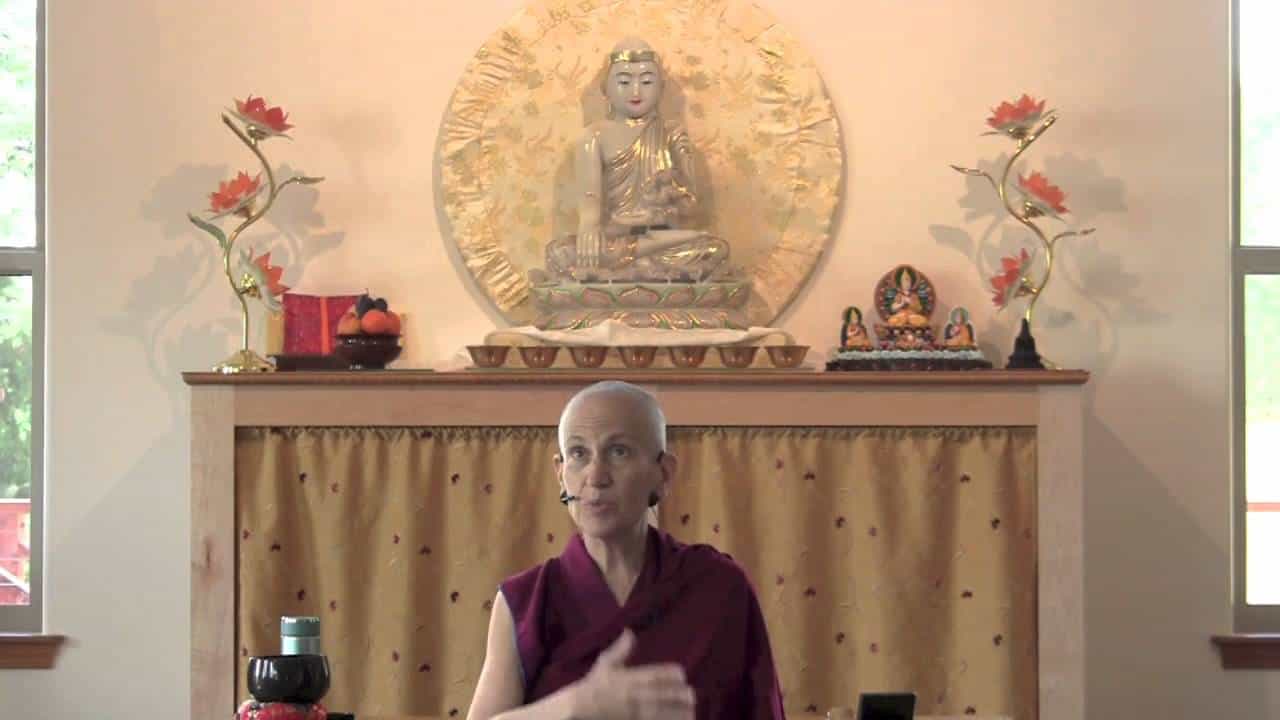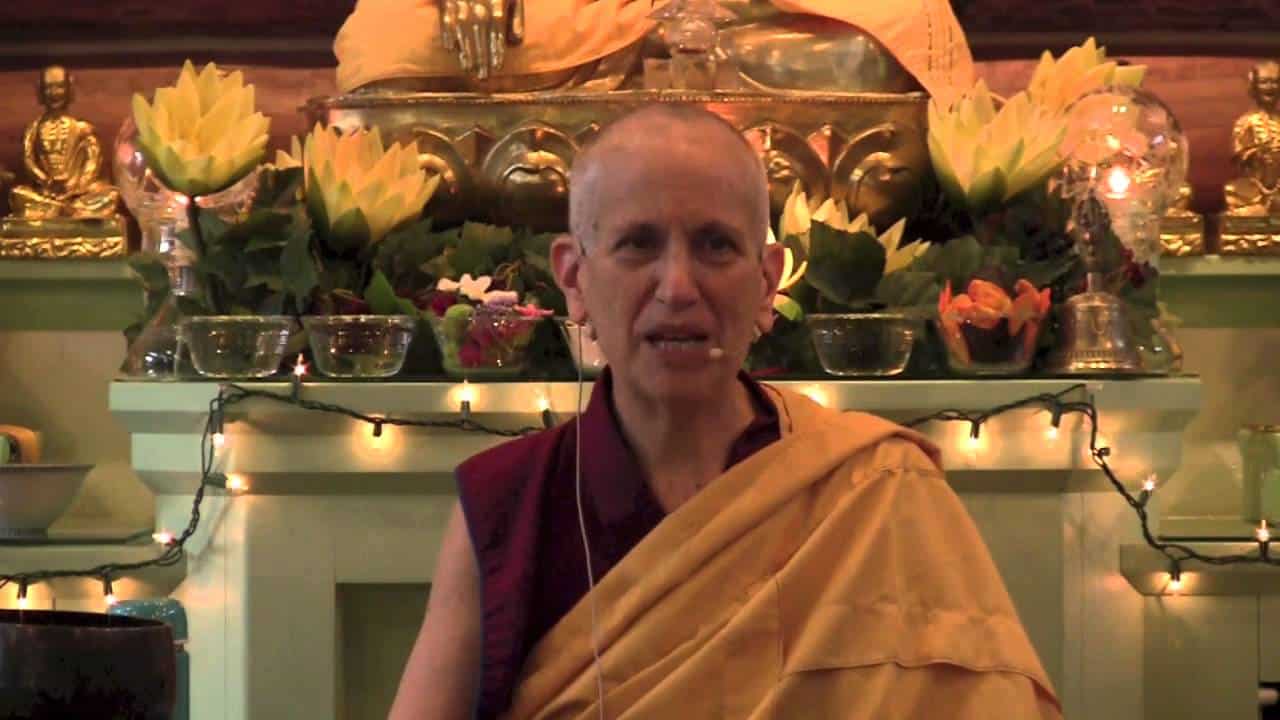The six preliminary practices, part 1
The text turns to meditation and how to structure the meditation session. Part of a series of teachings on the Gomchen Lamrim by Gomchen Ngawang Drakpa. Visit Gomchen Lamrim Study Guide for a full list of contemplation points for the series.
- The purpose of the six preliminary practices
- Clean the room and arrange the altar
- Arrange offerings on the altar
- Sit in the meditation posture, take refuge and generate the bodhicitta motivation
- The seven-limb practice and mandala offering: creating merit and purification
- A description of the limbs from the King of Prayers
- Prostration
- Offering
Gomchen Lamrim 05: The six preliminary practices, part 1 (download)
Contemplation points
- Consider the six preparatory practices: cleaning the room, setting up the altar, getting your body in the proper sitting position, visualizing the merit field, reciting the 7-limb prayer, making requests to the lineage mentors for inspiration. Why are each of these important?
- Take the time to really think about taking refuge and bodhicitta (reminding ourselves of WHAT we are doing and WHY). How does this affect the rest of the practice session?
- Venerable Chodron repeatedly challenged us how, on one hand, our mind rejects the idea of visualization, thinking it’s just “made up,” and yet on the other hand we totally buy into all the story-lines of our afflictions (when we’re anxious, craving something, angry…). Really spend some time watching the mind and investigate how we fabricate our experience.
- Along the same vein… Visualization is incredibly powerful. Venerable Chodron said, “Choose your make-believe!” Investigate the difference between visualizing the refuge tree or the merit field and the “visualizations” we normally indulge in under the influence of the afflicted mind. How do these different kinds of “visualizations” affect the mind and by extension the way we see and interact with the world?
Venerable Thubten Chodron
Venerable Chodron emphasizes the practical application of Buddha’s teachings in our daily lives and is especially skilled at explaining them in ways easily understood and practiced by Westerners. She is well known for her warm, humorous, and lucid teachings. She was ordained as a Buddhist nun in 1977 by Kyabje Ling Rinpoche in Dharamsala, India, and in 1986 she received bhikshuni (full) ordination in Taiwan. Read her full bio.


